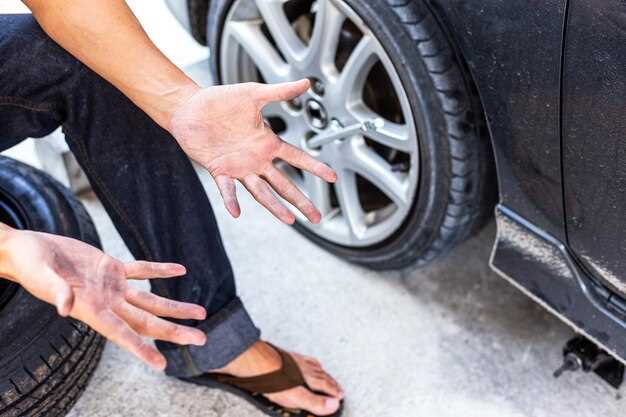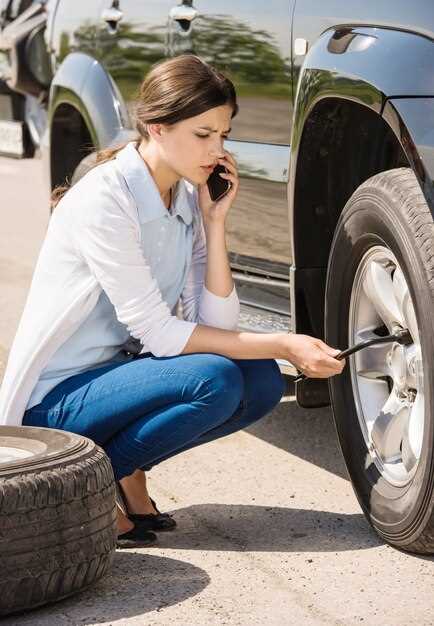
Uneven tire wear is a common issue that can significantly impact driving performance and safety. Understanding the underlying causes is essential for vehicle owners to maintain their tires and enhance overall vehicle longevity. One of the primary contributors to this phenomenon is the vehicle’s suspension system. When the suspension is misaligned or worn, it can lead to uneven contact between the tires and the road surface, resulting in accelerated wear.
Another critical factor in uneven tire wear is the correct inflation of tires. Overinflated or underinflated tires can cause specific areas of the tire to wear out faster than others. This situation can also be exacerbated by the uneven distribution of weight in the vehicle, affecting the tires’ performance. Regularly checking and maintaining tire pressure, along with being aware of the vehicle’s suspension conditions, can significantly mitigate these issues.
Additionally, driving habits play a vital role in tire wear patterns. Aggressive driving, including sharp turns and sudden stops, can stress the tires and lead to uneven wear. It is important for drivers to adopt smoother driving techniques to promote even tire usage. By recognizing these factors, vehicle owners can take proactive steps to extend the life of their tires and ensure a safer driving experience.
Impact of Suspension Components on Tire Wear

The suspension system of a vehicle plays a crucial role in maintaining proper tire contact with the road surface. Each component of the suspension, including shocks, struts, springs, and control arms, influences how weight is distributed across the tires during driving. Any malfunction or misalignment in these components can lead to uneven tire wear.
Worn or damaged shocks and struts can result in excessive bouncing or swaying, causing tires to lose consistent contact with the road. This can lead to uneven wear patterns, particularly on the outer edges of the tires. Moreover, if the suspension is too stiff or too soft, it may alter how the vehicle’s weight shifts during acceleration, braking, or cornering, further exacerbating wear issues.
Alignment is another vital aspect impacted by suspension components. When the alignment is off, which can be caused by worn control arms or bushings, the tires may not sit properly in relation to the road. This can lead to excessive toe or camber angles, causing rapid wear on specific areas of the tire tread. Regular alignment checks and adjustments are critical to mitigating these issues.
The spring rate of the suspension springs also plays a significant role in tire wear. If the springs are too weak or too strong for the vehicle’s weight and intended use, tire pressures can fluctuate, leading to uneven wear. Properly matched springs ensure that the correct amount of weight is distributed evenly across all tires, enhancing longevity and performance.
In summary, the condition and design of suspension components directly affect tire wear patterns. Regular maintenance and inspection of the suspension system are essential to promote even tire wear and extend overall tire life.
How Misalignment Contributes to Uneven Wear Patterns
Misalignment occurs when the wheels of a vehicle are not correctly positioned relative to each other or to the road. This deviation can lead to various handling issues and significantly affects tire longevity. When alignment is off, the tires tend to wear unevenly, creating specific patterns that can severely compromise performance and safety.
One of the primary issues caused by misalignment is that the tires may toe in or toe out. When the front tires are misaligned, they can push against each other or drift apart, resulting in excessive friction on either side of the tire tread. This friction generates heat, accelerating the wear process and leading to bald spots or uneven tread depths.
Additionally, camber misalignment can arise when the top of the tire leans inward or outward. This condition places unequal pressure on the tire tread, causing the inner or outer edge to wear faster compared to the other side. If left unaddressed, this can lead to serious damage, requiring premature tire replacement.
Moreover, improper adjustments to wheel alignment can influence the vehicle’s overall suspension system. A misaligned vehicle may experience instability, affecting driving comfort and safety. This instability further exacerbates uneven tire wear as the tires struggle to maintain optimal contact with the road surface during acceleration, braking, and cornering.
Regular alignment checks are essential in preventing misalignment and its associated uneven tire wear patterns. By ensuring that wheels are correctly aligned, drivers can extend the lifespan of their tires, improve fuel efficiency, and enhance overall vehicle performance.
Preventive Measures to Extend Tire Life

Maintaining your tires in optimal condition is crucial for safety, performance, and longevity. There are several preventive measures that can help extend the life of your tires, ensuring they remain effective throughout their lifespan.
Regular Tire Alignment: One of the most significant factors in preventing uneven tire wear is proper alignment. Misaligned wheels can lead to increased friction and uneven distribution of pressure across the tire surface. Schedule regular alignment checks, especially if you notice your vehicle pulling to one side or if you’ve hit a significant pothole.
Tire Rotation: Rotating your tires every 5,000 to 8,000 miles helps to ensure even wear. By changing the position of the tires on your vehicle, you can balance the wear patterns that develop due to the different ways weight is distributed.
Proper Inflation: Keeping your tires adequately inflated is essential. Under-inflation or over-inflation can both lead to premature wear. Check your tire pressure at least once a month and before long trips, maintaining levels recommended by the manufacturer.
Regular Inspections: Frequently inspect your tires for signs of wear, such as uneven tread or cracks. Early detection of issues can prevent further damage. Pay attention to the tread depth; using a tread depth gauge can help ensure you replace tires before they become unsafe.
Proper Driving Habits: Your driving style can significantly impact tire longevity. Avoid rapid accelerations, excessive braking, and sharp cornering. Smooth driving reduces stress on tires, helping them wear evenly and last longer.
Storage Considerations: If you have seasonal tires, store them properly when not in use. Keep them in a cool, dry place away from direct sunlight. Additionally, ensure they are stored upright or stacked flat to avoid deforming the shape.
Implementing these preventive measures can extend the life of your tires, enhancing safety and performance while reducing overall replacement costs. Regular maintenance and mindful driving are key to achieving the best results.

